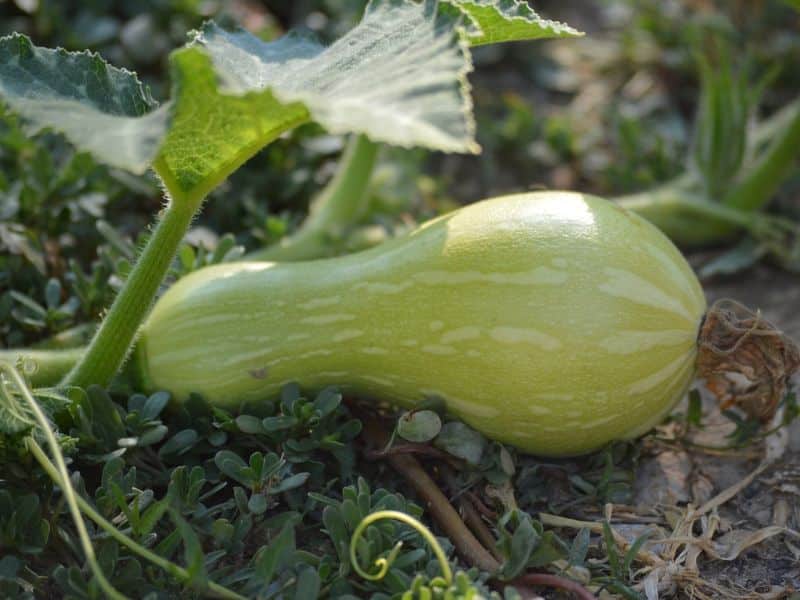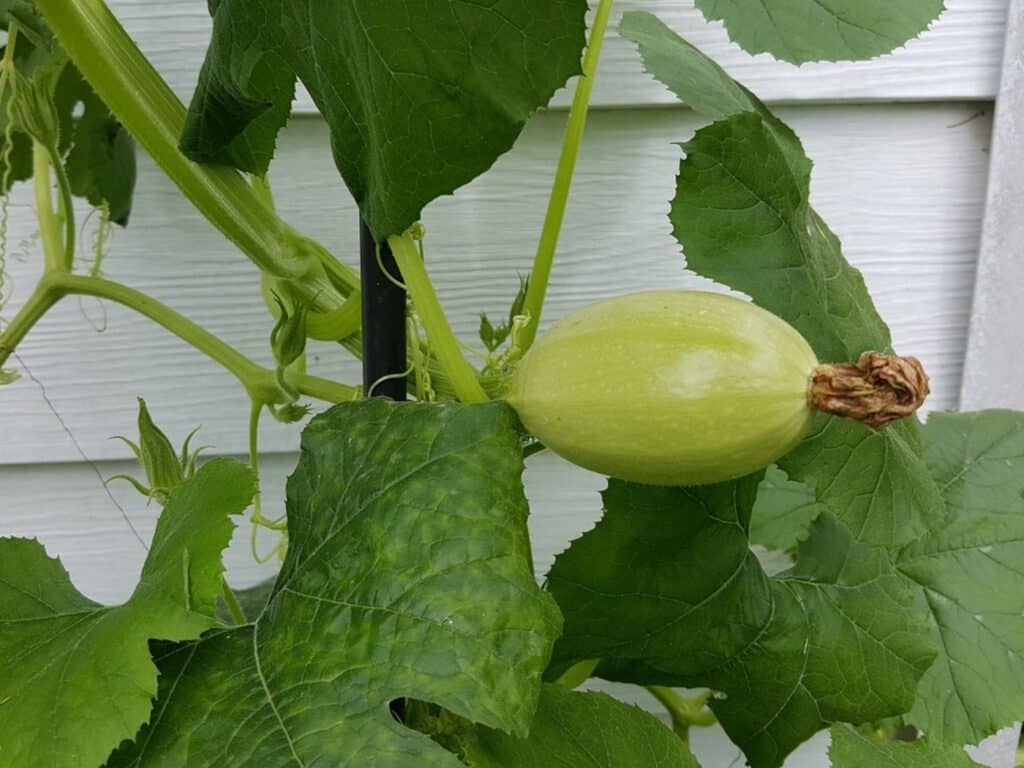You’ve nurtured your squash plants from tiny seeds, watching them grow with anticipation. But then, you notice the once vibrant green leaves starting to turn a worrying shade of yellow. It’s a sight that can dishearten even the most experienced gardeners.
Yet, this common issue doesn’t have to spell disaster for your squash harvest. Understanding why squash leaves turn yellow is the first step in addressing the problem and ensuring your plants thrive.
In this article, we’ll explore the various reasons behind the yellowing of squash leaves, from natural life cycles to more concerning issues like nutrient deficiencies or pests.
Armed with the right knowledge, you’ll be equipped to diagnose and treat your plants, keeping your garden healthy and productive. Let’s dive into the world of squash care, turning those yellow leaves back to a lush green and ensuring a bountiful harvest.
Understanding Squash Leaves Turning Yellow
When your squash leaves start mimicking the yellow brick road, it’s time to play detective. Let’s break down why these garden stars may well lose their green gleam and how knowing the cycle of life plays a crucial role in keeping your garden thriving.
Common Causes of Yellowing Leaves
First off, no need to panic. Yellow leaves can be garden gossip, telling you all sorts of secrets about what your squash needs. Among the chatter, you may well hear whispers of water woes, both from too much love (overwatering) and not enough (underwatering). These plants are like Goldilocks; they want their water just right.
Next in line are nutritional mishaps. Squash is as needy as a hungry teenager, craving a balanced diet rich in nitrogen, potassium, and phosphorus. Skip the nutrients, and those leaves start turning yellow faster than you can say “feed me”.
Not all villains are visible. Tiny, sap-sucking insects may well be throwing a party on your plants, draining them of their vigor. Meanwhile, diseases such as powdery mildew or mosaic virus don’t exactly roll out the welcome mat for greenery.
Sometimes, the issue is as simple as old age. Leaves get yellow and retire. It’s natural, like graying hair but less distinguished.
The Role of Plant Lifecycle
Remember, every leaf has its day. The lifecycle of your squash plant plays a significant part in determining the color of its leaves. In the grand scheme of things, yellowing can be as natural as changing seasons.
As squash plants mature, older leaves will sometimes yellow and fall off to make room for fresh growth. This is the circle of life, garden edition, and there’s no need for an alarm.
But keep this in mind: if your squash is at the peak of its growing season and still showing off yellow leaves like it’s going out of style, you may well need to step in. Assess the situation, get to the root of the problem, and you’ll likely find a straightforward solution.
After all, every plant wants to succeed; sometimes, they just need a little help from their human friends.
So, while yellowing leaves can be a cause for concern, understanding the common causes and recognizing the natural lifecycle of your squash plants can save you from prematurely hitting the panic button. Stay observant, stay informed, and above all, keep talking to your plants—they love it, even if they don’t always show it.
Identifying Nutrient Deficiencies

When your squash leaves start waving the yellow flag, it’s a signal to dig deeper into their needs, especially concerning essential nutrients. The transition from lush green to unusual yellow often points to a deficiency that requires your immediate attention for the health of your plants.
Let’s explore how to spot and address the most common nutrient shortages, ensuring your squash plants flourish.
Nitrogen Deficiency and Its Signs
Nitrogen plays a pivotal role in promoting healthy leaf growth and vibrant green coloration in squash plants. When nitrogen is scarce, the oldest leaves start feeling left out and turn yellow first, essentially because the plant redirects its limited nitrogen supply to newer leaves.
You may well also notice stunted growth and the general vigor of your plant taking a hit. If these signs are familiar, it’s time to consider a nitrogen boost, usually through a balanced, slow-release fertilizer that can uplift your squash plant’s green spirits again.
The Impact of Potassium Shortage
Potassium shortage steps into the spotlight with different symptoms. Unlike the uniform yellowing seen with nitrogen deficiency, potassium deficiency usually borders the leaf edges with yellow or brown, giving them a scorched appearance. This nutrient is crucial for water regulation and disease resistance, so a shortfall can make your plants more susceptible to other stressors.
Leaves may well curl and the overall growth of your squash plant can decelerate. Addressing a potassium shortage involves applying a potassium-rich fertilizer to the surrounding soil, gently guiding your squash plants back to robust health.
Environmental Stressors and Pests
Water Stress: Under and Over-Watering
Correct watering is like hitting the sweet spot in a game – too little or too much, and you’re out of luck. Under-watering your squash plants leaves them thirsty, causing leaves to turn yellow as they desperately try to conserve water.
On the flip side, over-watering drowns the roots, cutting off their oxygen supply and leading to similar yellowing symptoms. Finding that perfect watering rhythm is key to keeping those leaves green and healthy. Adjust your watering routine based on weather conditions and soil moisture levels to keep your squash plants happy.
Pest Infestations That Cause Yellowing
Squash plants have their fair share of enemies in the garden, and pests are among the top culprits behind yellowing leaves. Aphids, squash bugs, and spider mites see your squash plants as a free meal, sucking sap and damaging the leaves until they turn yellow.
Regularly inspect your plants for these unwelcome guests. Spotting them early makes all the difference. A gentle spray of water or the application of insecticidal soap can help evict these pests from your garden party. Remember, a healthy plant is the best defense against pest invasions, so keep your squash well-fed and watered.
Disease-Induced Yellowing
Mosaic Virus and Its Symptoms
Mosaic virus presents a significant threat to squash plants, unmistakably marked by mottled green and yellow leaves. You’ll notice these leaves taking on a blistered appearance, a clear signal that your plant’s health hangs in the balance.
Beyond leaf discoloration, the virus stunts plant growth, leading to diminished yields. Since it spreads via pests and cannot be cured, focusing on prevention through controlling pest populations and removing infected plants becomes your best defense.
Fungal Diseases Affecting Squash Plants
Fungal infections are notorious for causing yellowing in squash leaves. Powdery mildew, identified by white powdery spots on leaves, eventually leads to yellowed foliage as the infection spreads.
Downy mildew, conversely, starts with yellow spots that turn brown, with a fluffy growth underneath leaves in damp conditions. Controlling moisture around your plants and applying fungicides when necessary can help manage these diseases, keeping your squash plants thriving.
Cultural Practices for Healthy Squash Plants
Cultivating healthy squash plants involves more than just planting seeds and hoping for the best. It requires attention to detail and specific care techniques. Below, we delve into two critical aspects: proper watering techniques and fertilization and soil management, which are essential in preventing squash leaves from turning yellow.
Proper Watering Techniques
Watering your squash plants correctly is crucial for their overall health. Squash plants are thirsty but don’t appreciate wet feet. Aim to provide 1 to 1.5 inches of water per week, either through rainfall or supplemental watering. The trick is to water deeply and less frequently, encouraging strong root development.
Early morning is the best time to water, allowing moisture on the leaves to dry throughout the day and reducing the risk of fungal diseases. Also, consider using a drip irrigation system or soaker hoses to deliver water directly to the base of the plant, minimizing leaf wetness and further decreasing disease risks.
Fertilization and Soil Management
Healthy soil is the foundation of a thriving squash garden. Before planting, test your soil to understand its needs. Squash plants are heavy feeders requiring rich, well-draining soil. Amend your soil with compost or well-rotted manure to improve fertility and structure.
Apply a balanced fertilizer during the growing season, but avoid over-fertilization, especially with nitrogen-heavy formulas, which can lead to lush foliage at the expense of fruit production. Instead, opt for a balanced 10-10-10 fertilizer applied according to the package directions.
Mulching around your plants not only retains moisture but also helps regulate soil temperature and suppresses weeds that compete for nutrients. Remember, a little effort in soil preparation goes a long way in preventing yellow leaves and ensuring a bountiful squash harvest.
Frequently Asked Questions
Why are my squash leaves turning yellow?
Yellowing squash leaves can be attributed to several factors, including water imbalance (either too much or too little), nutrient deficiencies, pest invasions, diseases such as mosaic virus, powdery mildew, and downy mildew, as well as natural aging of the plant.
How can water affect the health of squash plants?
Improper watering, whether it’s over-watering or under-watering, can lead to stressed squash plants, resulting in yellow leaves. Consistently providing adequate water encourages healthy growth and prevents stress-related yellowing.
What role do nutrients play in preventing yellow leaves?
Nutrient deficiencies, especially in nitrogen, potassium, and magnesium, can cause squash leaves to turn yellow. Amending the soil with compost or using balanced fertilizers helps in maintaining the nutrient balance conducive for healthy plant growth.
How can I protect my squash plants from pests and diseases?
Regular monitoring for signs of pests and disease, along with implementing healthy cultural practices such as crop rotation, proper spacing, and adequate watering, can significantly reduce the risk of pest and disease-induced yellowing of leaves.
What are the best cultural practices for healthy squash plants?
Best practices include providing adequate water without overdoing it, avoiding over-fertilization, testing soil to understand its needs, amending with compost for improved soil health, and using balanced fertilizers and mulch to maintain moisture and nutrient levels.
Is mulching beneficial for squash plants?
Yes, mulching helps retain soil moisture, reduces weed competition, and can improve soil quality over time, which benefits squash plant health by preventing stress factors that can cause yellow leaves.
Can natural aging cause squash leaves to turn yellow?
Yes, as squash plants age and progress through their lifecycle, it’s natural for older leaves to turn yellow and die off to allow the plant to focus energy on new growth and fruit development.
Read more:







